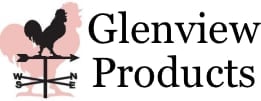APPLICATION
This section applies to all licensed aerodromes.
INTERPRETATION
Expressions used in this section have the same meaning as in section 92.1
REQUIREMENTS
For the purposes of subregulation 89S (2) of the Civil Aviation Regulations 1988, this subsection sets out:
- Where a wind direction indicator must be located, and
- The circumstances in which more than one wind direction indicator must be installed at an aerodrome.
- A wind direction indicator must be located so as to be visible from aircraft that are in flight or aircraft that are on the movement area.
- A wind direction indicator must be located so as to be free from the effect of air disturbance caused by buildings or other structures.
- Subject to paragraph 3.4.1, if a straight-in landing off an instrument approach is permitted at any runway, a wind direction indicator must be provided at the threshold of that runway.
- Paragraph 3.4 does not apply to a runway if surface wind information is passed to the pilots of aircraft approaching the runway through:
- an automatic weather observing system that:
- Is compatible with the Bureau of Meteorology’s weather observing system; and
- Provides surface wind information through an aerodrome weather information broadcast; or
- an approved observer having a communication link with the pilots through which timely information about surface wind may be clearly passed to them; or
- any other approved means of providing surface wind information.
- A wind direction indicator provided at the threshold of a runway must be located:
- except if it is not practicable to do so, on the left hand side of the runway as seen from a landing aircraft; and
- outside the runway strip; and
- clear of the transitional obstacle limitation surface.
- If it is practicable to do so, a wind direction indicator provided at the threshold of a runway must be located 100 metres upwind of the threshold.
Note: CASA may issue directions under subregulation 92 (2) of the Civil Aviation Regulations 1988 requiring additional wind direction indicators to be provided at an aerodrome.
REQUIREMENTS
- For the purposes of subregulation 89S (3) of the Civil Aviation Regulations 1988, this subsection specifies the standards for wind direction indicators.
- A wind direction indicator must consist of a tapering fabric sleeve attached to a pole at its wide end 6.5 metres above the ground.
- The sleeve must be 3.65 metres long and taper from 900 millimetres in diameter to 250 millimetres in diameter.
- The wide end is to be mounted on a rigid frame to keep the end of the sleeve open and attached to the pole so as to allow it to move around freely.
- The fabric of the primary wind direction indicator must be white and that of any additional wind direction indicator must be:
- If it is not intended to be illuminated at night – – yellow; or
- If it is intended to be illuminated at night – – either white or another colour that is clearly visible when illuminated.
- The primary wind direction indicator must be located in the centre of a circle 15 metres in diameter, coloured black and bordered:
- By a white perimeter 1.2 metres wides; or
- By a ring of 15 equally spaced white markers each with a base not less that 0.75 metre in diameter.

